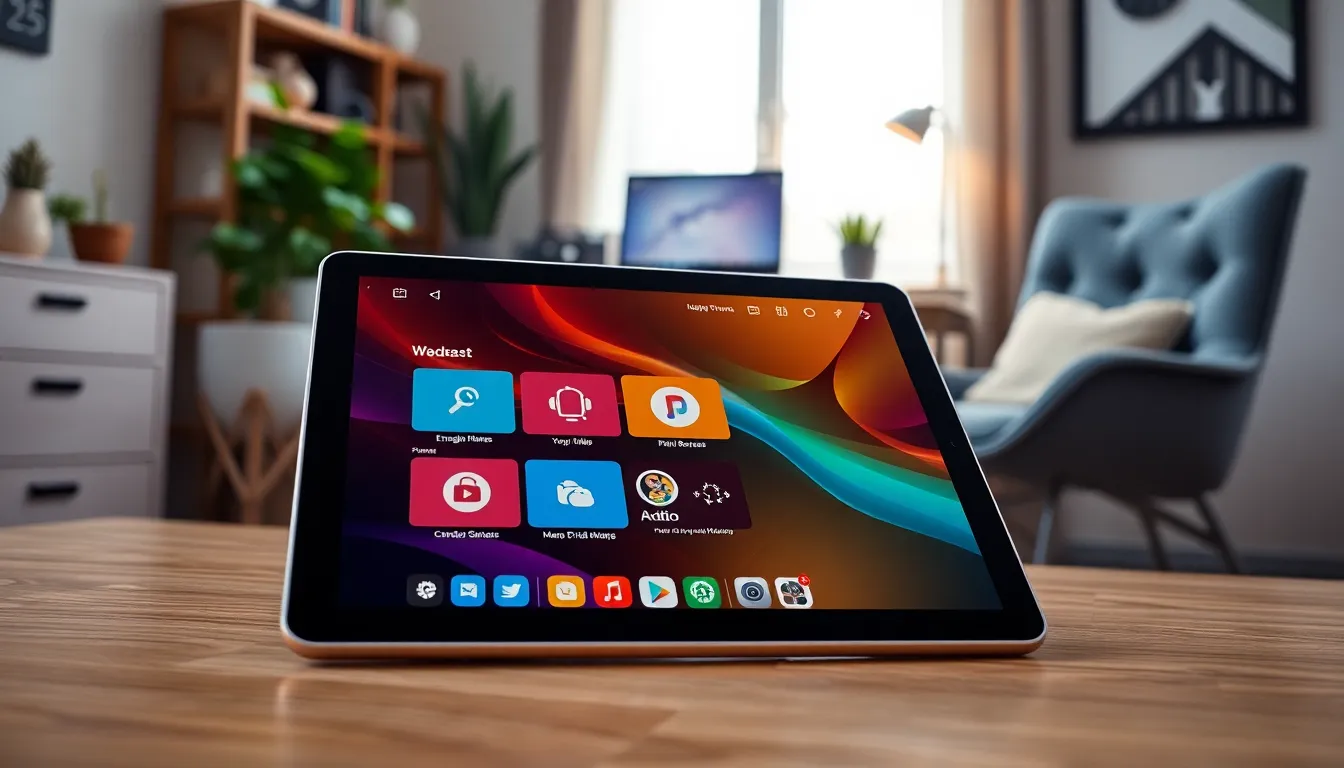In a world where technology evolves faster than a cat video goes viral, keeping up with tablet OS updates is crucial. These updates aren’t just about fixing bugs; they’re like a spa day for your device, giving it fresh features and improved performance. Imagine your tablet strutting its stuff with a sleek new interface or a battery life that lasts longer than your last Netflix binge.
But let’s be real—navigating the update process can feel like a game of whack-a-mole. One minute you’re enjoying your favorite app, and the next, you’re faced with a pop-up demanding your attention. Fear not! Embracing these updates can transform your tablet experience from “meh” to “wow.” Dive in as we explore the importance of staying current with OS updates and how they can keep your tablet running like a well-oiled machine.
Table of Contents
ToggleOverview of Tablet OS Updates
Tablet OS updates play a crucial role in improving performance and functionality. Regular updates fix vulnerabilities, enhance security, and introduce innovative features that enrich the user experience. Notably, they often optimize battery life and refine system interfaces, ultimately making the device more responsive.
Many users experience hesitation when it comes to installing updates. Interruptions during an update process can disrupt ongoing tasks, leading to frustration. Awareness of the update schedule provided by manufacturers allows users to prepare for potential downtimes.
Updates can vary in frequency depending on the manufacturer and device model. Major operating systems like Android and iOS release updates periodically, with significant versions typically launched annually. Minor updates may roll out more frequently, addressing bugs and security issues as they arise.
Most users benefit from participating in automatic update options. Enabling this feature ensures that tablets receive the latest enhancements without manual intervention. It protects devices from security risks associated with outdated software.
Not all updates are created equal. Some may introduce new features that align with current user needs, while others focus on performance improvements or security patches. Keeping abreast of update notes helps users understand the impact on their devices.
Overall, embracing updates fosters a better tablet experience. Engaging with each update enhances device longevity and responsiveness, enabling users to explore new functionalities. Prioritizing updates allows users to enjoy the latest advancements in tablet technology while maintaining optimal security levels.
Key Features of Recent Updates

Recent tablet OS updates bring exciting changes, focusing on improving overall performance and enhancing the user interface. These enhancements contribute significantly to user satisfaction and device longevity.
Performance Enhancements
Updates often include enhancements that boost speed and responsiveness. Increased processing efficiency can lead to quicker app launches and smoother multitasking. Battery optimization is another critical improvement, reducing energy consumption during various tasks. Additionally, system stability sees substantial upgrades, minimizing crashes and lag. Users notice these performance enhancements during daily activities, making their experience more enjoyable and efficient.
User Interface Improvements
Design changes frequently accompany OS updates, refining the user experience. New visual elements often arrive, including updated icons and engaging themes that enhance aesthetics. Navigation becomes more intuitive with streamlined menus and improved layouts. Enhanced accessibility features ensure that all users can enjoy their devices effortlessly. Overall interface responsiveness also benefits, leading to quicker interactions and a more fluid experience. These improvements make navigating through apps and settings a seamless endeavor for users.
Major Tablet OS Players
Tablet operating systems play a vital role in user experience. Each leading platform has unique features and update practices.
Android Updates
Android updates focus on security, performance, and new functionality. Major releases typically occur once a year, providing users with exciting features such as improved privacy settings and interface tweaks. Manufacturers customize these updates, leading to variations in delivery timelines. Some devices may receive security patches every month, ensuring enhanced protection against vulnerabilities. Automatic updates simplify this process, helping users stay current without additional effort. Recent Android OS updates introduced new multitasking capabilities, optimizing efficiency during daily tasks.
iOS Updates
iOS updates offer seamless integration and consistent performance improvements. Apple releases significant updates annually, accompanied by minor updates throughout the year. Each major version unveils innovations like enhanced app management and improved battery efficiency. Users can expect security patches regularly, safeguarding devices from potential threats. Keeping an eye on update notes provides clarity on what to expect. The latest iOS updates enhance user interface aesthetics, making navigation more intuitive and streamlined.
Windows Tablet OS Updates
Windows tablet OS updates prioritize versatility and functionality. Microsoft releases major updates twice a year, ensuring devices operate smoothly and securely. Incremental patches address specific security vulnerabilities, contributing to overall system stability. Familiarity with ongoing updates is essential, as they often introduce features like enhanced touch support and better app integration. Notable recent updates improved the user interface and allowed for richer multitasking experiences, catering effectively to both personal and professional use cases.
Impact on Users
Tablet OS updates significantly affect user experience through performance enhancements and new features.
Benefits of Keeping OS Updated
Up-to-date tablets deliver improved security, as manufacturers routinely address vulnerabilities through patches. Performance boosts also accompany updates, resulting in faster app launches and smoother multitasking. Regular updates introduce exciting new features, enhancing usability and overall enjoyment. Users benefit from optimized battery life, reducing energy consumption during daily tasks. Many users find new visual elements and design improvements more engaging, leading to a streamlined navigation experience. Accessibility features expand, ensuring all users can interact comfortably with their devices. Automatic updates simplify the process, allowing users to focus on their tasks without worrying about manual installations.
Potential Drawbacks
Potential disruptions arise during the update process, leading to interrupted tasks and decreased productivity. Users may experience frustrations with unexpected bugs or performance issues that can follow some updates. Learning curves often accompany new features, requiring adjustments that may temporarily hinder usability. Storage limitations can pose problems, as substantial updates may consume significant device capacity. Some users notice slower performance initially after an update while the device optimizes the new software. Lastly, not every update meets expectations, leading to disappointment if anticipated features do not deliver expected improvements.
Conclusion
Staying current with tablet OS updates is crucial for maximizing device performance and security. Embracing these updates not only enhances user experience but also introduces innovative features that can transform how users interact with their devices. While the update process may seem daunting at times, the benefits far outweigh the temporary inconveniences.
By enabling automatic updates and keeping an eye on update schedules, users can ensure their tablets remain efficient and secure. Ultimately, regular updates lead to a more enjoyable and productive experience, allowing users to fully leverage the capabilities of their tablets.




